Selecting the right kids bedroom furniture is more than just a matter of aesthetics; it’s a crucial investment in your child’s comfort, safety, and happiness. With options ranging from toddler furniture to teens’ bedroom sets, navigating the vast markets of childrens bedroom furniture sets can be a daunting task. This task’s importance is magnified considering the role that a well-designed, functional, and appealing bedroom plays in a child’s development. As they grow, their bedroom becomes a space for sleep, study, and play, making the choice of kids furniture one that should evolve with their needs.
This article will guide readers through important considerations, including assessing space and the specific needs of their child, ensuring safety in every furniture piece chosen, and selecting essential furniture pieces that combine functionality with personal style. Moreover, strategies for maximizing storage with childrens furniture and incorporating elements that reflect the child’s personality will be explored. Whether you’re looking for boys bedroom furniture, girls bedroom furniture, or gender-neutral options, these insights will help you create a space that supports your child’s growth and reflects their individuality, all while ensuring your choices are safe, durable, and perfectly suited to your home.
Assessing the Space and Needs
Measuring the Room

When setting up furniture in a child’s bedroom, start by measuring the room’s length, width, and height accurately. Use tools like a 25-foot tape measure or a laser measuring tool for precision. It’s helpful to mark the furniture’s footprint using blue painter’s tape or newspaper on the floor. This will help you see the space it will take up and how it will affect the room’s flow.
Identifying Multifunctional Furniture
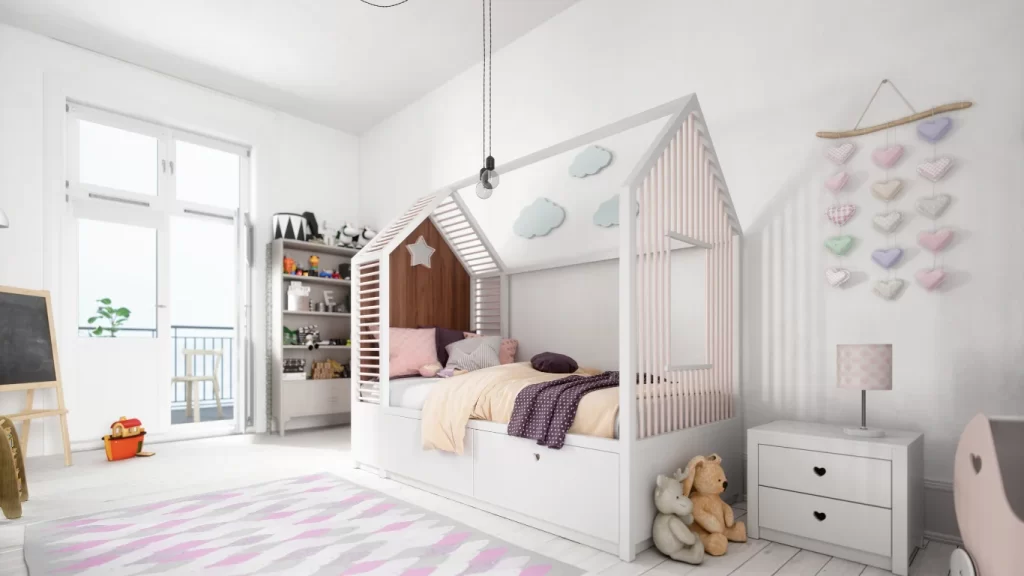
It’s important to think about furniture that can be used for different purposes, especially in smaller spaces. The Maxtrix Furniture System is a good example. It can be changed to fit changing needs, like turning a single bed into a bunk bed or adding things like slides or storage units. This means the furniture can grow with the child and meet their changing needs without needing more space.
Considering the Child’s Age
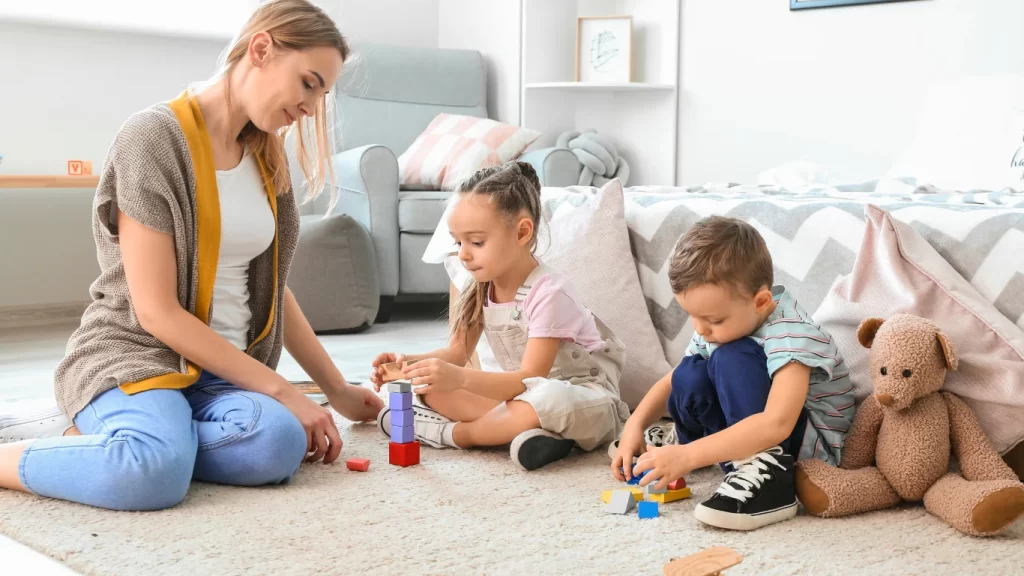
Selecting the right furniture for children is important for their comfort and posture. Their desk and chair should help them sit with their hips, knees, and ankles at 90-degree angles, which can reduce tiredness and help them concentrate. When choosing a bed, consider your child’s height to make sure it will fit in the room.
Safety Considerations
Choosing Non-Toxic Materials
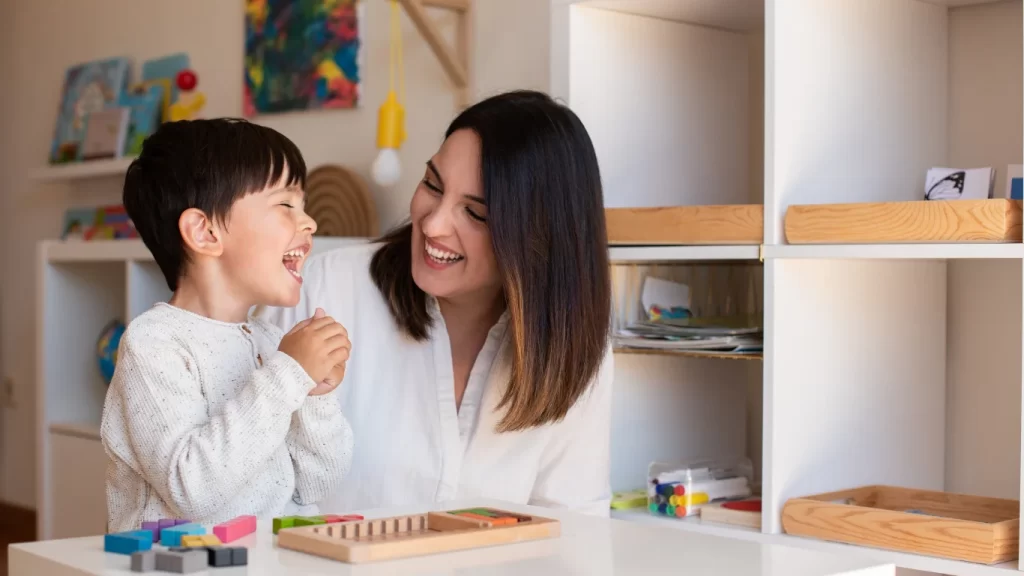
When picking furniture for kids’ bedrooms, it’s important to choose non-toxic materials to keep them healthy. Pick furniture made from solid wood instead of particle board or MDF, as the latter often contains harmful formaldehyde. Look for items with natural oil or water-based finishes, and make sure any adhesives used are VOC-free. For textiles, go for natural fabrics like cotton, wool, or linen, and consider certifications such as GOTS for organic fabrics and GOLS for latex foams, as they guarantee the absence of harmful chemicals.
Parents Beware! You Won’t Believe the Mistakes You’re Making When Choosing a Baby Monitor!
Ensuring Sturdy Construction
When buying children’s furniture, make sure it’s sturdy and stable to prevent accidents. Test it by giving it a gentle shake before buying. Larger items like bookshelves and dressers should be able to be anchored to the wall to prevent tipping. Look for products that come with anchoring kits and clear installation instructions. Also, store heavier items on lower shelves and properly secure televisions and other heavy objects to make children’s rooms safer.
Selecting Rounaded Edges and Corners
To keep from getting hurt, pick furniture with rounded edges and corners. This simple choice can stop many common injuries from sharp furniture edges. When you choose furniture, stay away from pieces with high, sharp edges or sticking out hardware. If you can’t find the right furniture in local stores, check online shops that specialize in child-safe furniture to find pieces that are both safe and stylish.
Essential Furniture Pieces
When you’re setting up a child’s bedroom, picking the right furniture is crucial. The furniture not only has to be practical but should also help create a welcoming environment and support the child’s development.
Beds and Bunk Beds
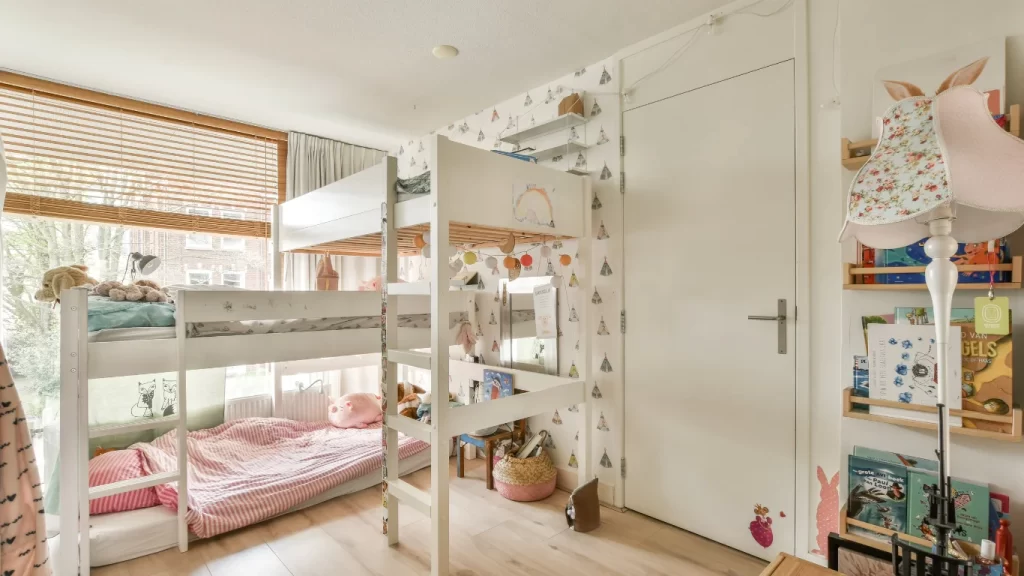
Source: Bunk Bed Genie
- Bunk Beds: A timeless choice for siblings sharing a room or for sleepovers, bunk beds are celebrated for their space-saving design. Options like converting the bottom bunk into a desk offer versatility as children grow, catering to their changing needs.
- Single and King Single Beds: Single and king single bunk beds merge style with functionality, offering designs that reflect individual personalities while ensuring safety with features like guardrails.
- Growth-Friendly Designs: Bunkers bunk beds are designed to evolve with your child, offering the flexibility to transform into corner or longwall bunks, add storage or study solutions, and even expand to three or four-bed configurations with trundles.
Wardrobes and Storage
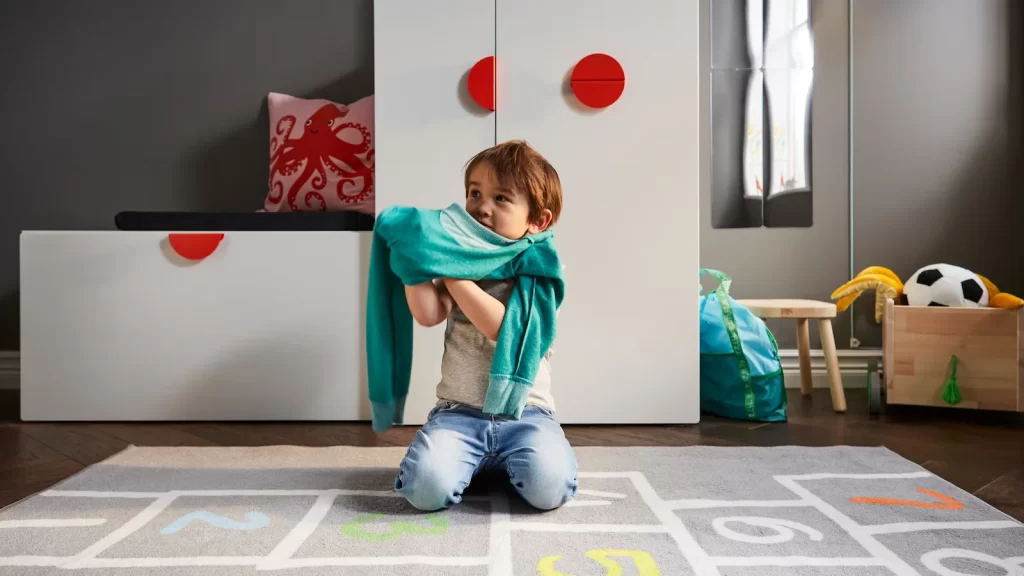
Source: Ikea
- Sliding Door Wardrobes: Ideal for compact spaces, these wardrobes are easy for children to operate and can be fitted with drawers and hanging rails for efficient organisation.
- Mirror and Hinged Wardrobes: Mirror wardrobes make rooms appear larger and are loved by children. Hinged wardrobes, suitable for larger rooms, offer full visibility and easy organisation, with the potential for customisation to meet changing storage needs.
- Custom Wardrobes: Tailoring storage to specific requirements, custom wardrobes can be organised in sections, with adjustable shelves and drawers to accommodate a child’s growth and varied storage needs.
Desks and Study Areas
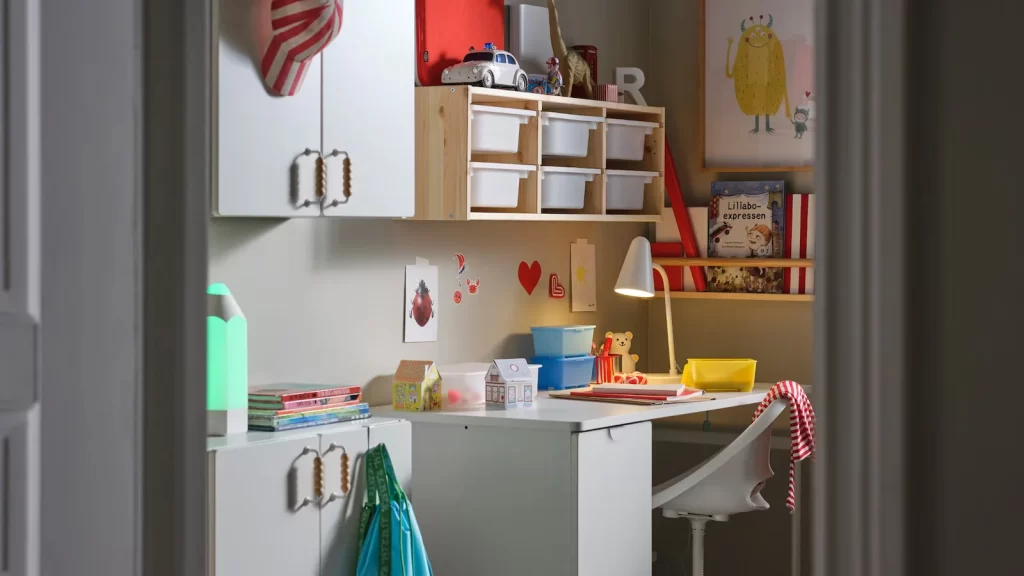
Source: Ikea
- Ergonomic Study Tables: Ensuring comfort and promoting good posture, ergonomic study tables are essential for children’s study areas. The design should support the 90-90-90 rule for optimal concentration and reduced fatigue.
- Study Room Design: Incorporating exciting patterns and designs in the study area can create an ambience conducive to learning and creativity, reflecting the child’s tastes and preferences.
- Multipurpose Furniture: For rooms serving dual purposes, selecting furniture that can double as study space is key. Bunk beds with desks underneath or modular furniture systems offer practical solutions for both sleeping and studying.
Each of these essential furniture pieces plays a crucial role in creating a bedroom that supports a child’s development, provides comfort, and encourages creativity. By carefully selecting beds, wardrobes, and desks that grow with the child, parents can ensure a functional and adaptable space that meets the evolving needs of their children.
Incorporating Personal Style
Incorporating personal style into a child’s bedroom not only makes the space more enjoyable for them but also encourages self-expression and creativity. Here are ways to blend personal tastes with practicality, ensuring the room grows with the child.
Choosing Themes and Colors

Selecting a theme and color palette is a collaborative and exciting process. Whether it’s a light, energizing yellow or a calming sea blue, the choice should reflect the child’s personality and interests. Designer-approved ideas suggest a balance between the child’s current preferences and colors they can grow into, ensuring longevity in design. For a nursery, considering a range of diverse, whimsical, and elegant themes can bridge the gap from infancy to young adulthood, creating a joyous space that ignites imagination.
Using Transitional Furniture
Opting for furniture that can adapt to a child’s growing needs is key. Convertible cribs that modify into toddler beds and desks that can adjust in size offer a practical solution. This approach not only caters to immediate needs but also accommodates future changes, making the space versatile. Choosing a design theme that can easily transition as the child matures ensures the room remains relevant and functional over time.
Adding Personal Touches

Personalising the bedroom by displaying the child’s artwork or collections adds a unique touch. For example, showcasing Star Wars toys on blue shelves or incorporating 60s and 70s movie posters above the workspace can make the room special and fun. Moreover, creating a dreamy teepee or canopy, a fun playhouse, or a little house framed reading nook can offer a special corner for play, read, or rest. Allowing children to choose their own colors, themes, and wall art ensures the room reflects their tastes and personality, making it truly their own.
Incorporating personal style into kids’ bedroom furniture and decor is about finding the right balance between practicality, aesthetics, and the child’s evolving tastes. By choosing the right themes and colors, using transitional furniture, and adding personal touches, parents can create a space that their child loves today and can grow into tomorrow.
Maximizing Storage Solutions
Maximizing storage in a child’s bedroom is essential for maintaining a tidy and functional space. By cleverly using underutilised areas and selecting the right furniture, parents can create a clutter-free environment that fosters creativity and learning. Here are some effective storage solutions to consider:
Under-Bed Storage
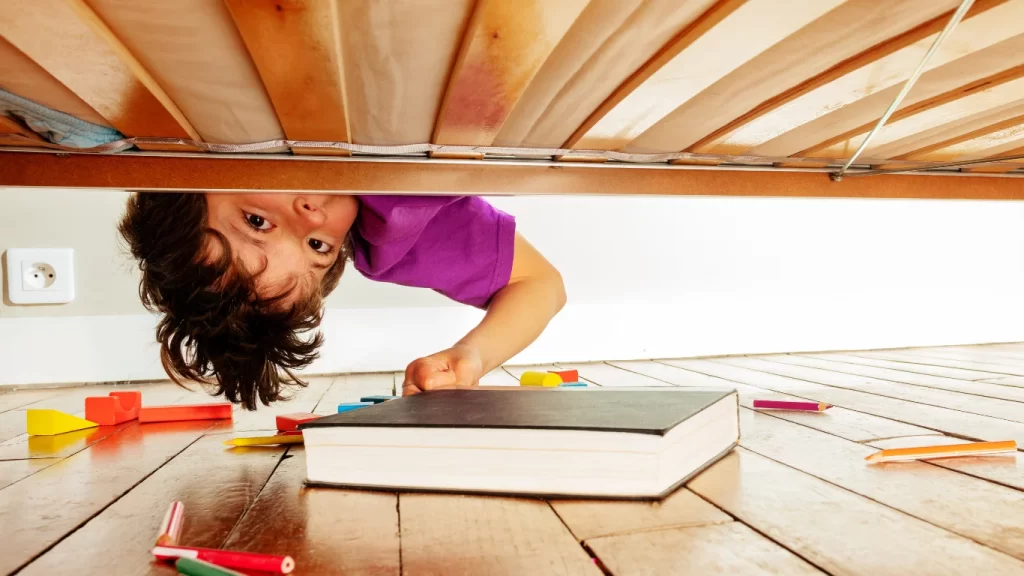
The area beneath the bed offers a vast opportunity for storage. Utilising under-bed storage boxes can transform this unused space into a convenient spot for storing duvets, extra pillows, off-season clothes, and more. These storage solutions are particularly beneficial as they keep items readily accessible while keeping them out of sight. Depending on personal preference, you can pick from a variety of styles, including discreet black boxes, clear plastic containers for easy visibility of contents, or elegant baskets with covers. For those with greater storage needs, beds with built-in storage are an excellent option.
Shelving Units and Cabinets
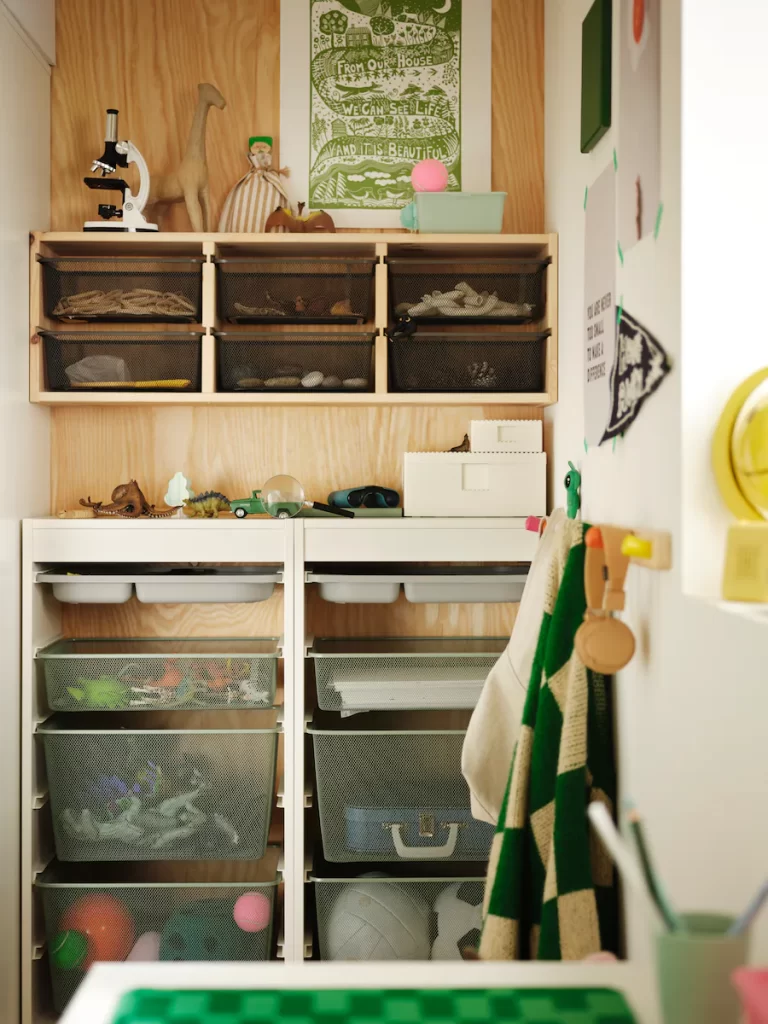
Source: Ikea
Shelving units and cabinets are not only practical but can also enhance the decor of a child’s bedroom. Modular storage units offer the flexibility to rearrange components as needs change, making them a wise choice for growing children. When selecting shelving units, consider those with adjustable shelves that can accommodate books, toys, and decor items, adding a personal touch to the room. Cabinets with vibrant colours and imaginative designs can double as playful elements, encouraging children to keep their space tidy.
Closet Organizers
Effective closet organisation can significantly improve storage in a child’s bedroom. Small drawers, cubbies, and bins facilitate easy access to clothing and accessories without causing a mess. For shared closets, a symmetrical layout with labelled drawers can help maintain harmony. Utilising the top space of the closet for out-of-season items and installing lower rods for everyday clothes allows for better use of space. Wire closet organisers offer versatility, accommodating larger clothing and various accessories as the child grows. Including child-friendly features, such as soft-close hinges and easy-to-reach organisers, ensures safety and promotes independence.
By incorporating these storage solutions, parents can maximise the available space in their child’s bedroom, creating an organised and inviting environment that supports their child’s development and creativity.
Summing Up How to Choose the Best Kids Bedroom Furniture for Your Home
Choosing kids’ bedroom furniture is important for creating a nurturing and functional environment. It’s crucial to marry functionality with personal style and carefully consider safety, adaptability, and reflecting your child’s unique personality. From beds and storage solutions to desks and multifunctional spaces, the aim is to help you make informed choices that grow with your child’s needs, ensuring a comfortable, safe, and inspiring bedroom.
Creating the perfect space for your child is not just about designing a beautiful room, but also about building a safe and supportive environment that helps their development, creativity, and well-being. By prioritizing quality, safety, and flexibility when choosing kids’ bedroom furniture, and adding personal touches that reflect your child’s uniqueness, you can establish a nurturing foundation that meets their current and future needs. This thoughtful approach not only enhances your child’s daily experiences, but also creates lasting memories and values in their personal space, making it a cherished place for years to come.





